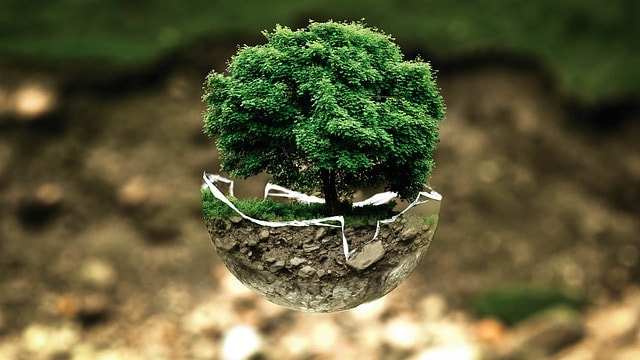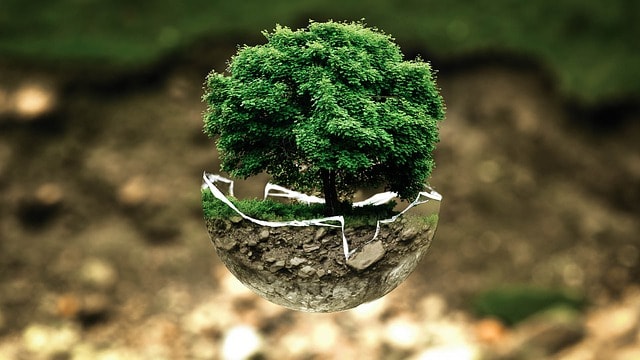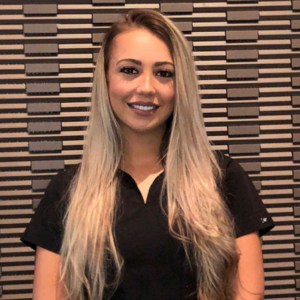Sustainability may not be the first thing that you think about when it comes to improving your smile. The importance of preserving the environment is paramount in these uncertain times. Following best practices in this field is now at the forefront of the industry. In this post, we’re going to show you the environmental footprint of braces. And how you can help the charge for a green planet. Let’s get saving.

Image by Bela Geletneky from Pixabay
People Also Ask
- Is Invisalign bad for the environment?
The aligners are BPA (Bisphenol-A) free. BPAs have been linked to an increased risk of cancers and other health issues. This compound is also toxic to the environment. Invisalign is also recyclable like any other plastic. So no, Invisalign is not bad for the environment.
The Environmental Footprint of Braces
There are many aspects that go into your treatment plan that impact their environmental footprint. Learning more about how our orthodontic care center works hard to reduce waste and improve everyone’s quality of life allows you to feel good about your decision to fix your smile.
What Factors Influence the Environmental Footprint of Braces?
There are many aspects of a treatment plan that impact the environmental footprint. Below we’ll discover more about how our orthodontic care works to reduce waste. This allows you to feel good about your decision to fix your smile.
Your treatment plan will begin with a complimentary consultation with an expert. This is where he will use different strategies for understanding what needs to be done. For instance, we choose to use digital imaging to gain a full view of your mouth. This is better for the environment compared to using traditional x-rays.
This is better for the environment compared to using traditional x-rays.
From there, your treatment continues with the application of braces to your teeth. We take pride in providing the highest quality braces. And making sure that they are well placed. This helps to reduce breakage that contributes to waste. When we only have to place your appliance once, you can be sure that there is no waste
Other factors that influence how treatment impacts the environment include the chemicals we use. For example, cleaning up the examination room. You should also know that we leave no detail alone. The lights that we use and the temperature that we set the thermostat with. An awareness of how our actions impact the environment is always on our minds.
How Do Digital Images Differ From X-rays?
Digital radiography uses advanced technology to capture images. Images of your teeth, jaw bone, and other oral structures. The conventional X-rays that are still used by some offices need more energy to operate. They also need more materials such as film and developer solutions. With a digital X-ray, we can get an even better image of your mouth while being able to see the images on a screen.
This allows us to stop using chemicals to develop film X-rays. It also cuts down on paperwork and storage waste. Your digital X-rays are accessible online. So that we can access them at any time. A wasteful collection of paper files is a thing of the past.
What Other Ways Do Orthodontists Reduce Energy Loss?
Like your home, orthodontists use strategies. We use these methods throughout the office to reduce how much energy we use each day. Thus, reducing the environmental footprint of braces. Programmable thermostats help to keep the atmosphere in the treatment rooms comfortable. We adjust the temperature, day and night for energy savings.
LED lights are another way to reduce the environmental footprint of your treatment. As you’ll notice, your orthodontist uses bright lights to get a good view of your teeth. Switching from incandescent bulbs to LED styles is an easy way to still be able to see the surface of your teeth.
What About Equipment Sterilization?
The equipment used for your treatment is often made of reusable materials. Materials such as stainless steel. This allows for waste reduction compared to using disposable products. It also means that the equipment is sterile for each patient. Your orthodontic care team chooses which instruments are worth sterilizing. It makes more sense to sterilize the doctor’s tools and other essential implements.
There are several ways to sterilize equipment. Your doctor and the rest of the staff must follow the recommended laws and guidelines. There are strict laws on hygiene and safety. For instance, using high temperatures and UV light can kill germs. This is without releasing toxic chemicals into the environment.
Are the Materials Used for Orthodontic Treatment Recyclable?
Patients often ask if orthodontists reuse braces. You can relax to hear that they should never take brackets out of one person’s mouth and put them in yours. But, there are many different materials that may be recyclable. The stainless steel for the brackets and wires can be repurposed for other purposes.
Invisalign is also completely recyclable. The aligners, once used, are able to go in the recycle bin. They are then sent to the same place all other plastics go. Hooray for that.
Besides metal, there are certain plastics that are recyclable. These may consist of things such as disposable cups. You may know them from rinsing after your treatment procedures. Old paperwork and other types of materials should go into the recycling bin.
What Other Things Are Done to Preserve the Environment?
Technology makes our work far better for the environment. You can also help with this by making simple changes. Changes such as requesting text reminders of your upcoming appointments and email receipts. Taking care of your braces also helps to lower breaking risk. risk of them This means the use of fewer materials for your care. Further reducing the environmental footprint of braces.
Conclusion
Did learning about the environmental footprint of braces leave you wanting to know more about orthodontic treatment? Give our office a call for a complimentary consultation where Dr. Adam Schulhof can answer all of your questions.
- Which tip will you try first???
- Either way, let us know by leaving a comment below right now and continue the conversation.
400 Kinderkamack Rd.
Oradell, NJ 07649
Phone: 551-231-5323



